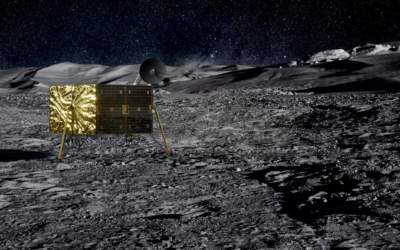Masten Space Systems announced today that the company has been awarded a contract from the Defense Advanced Research Projects Agency (DARPA) as part of Phase 1 of the Experimental Spaceplane (XS-1) program to develop a reusable launch vehicle. Over the last decade, Masten has built three highly operable, vertical takeoff/vertical landing, reusable rockets which are flown by small teams of five to seven people. Masten’s experience with vertical takeoff/vertical landing rockets has shown that the company’s flight vehicles can offer greater flexibility than reusable launch vehicles that require runways to land. Masten has logged well over 300 flights to date with its Xoie, Xombie and Xaero reusable rockets.
The goals of the XS-1 program include designing and building a rocket capable of flying 10 times in 10 days, lifting payloads greater than 3,000 pounds to low Earth orbit, and dramatically lowering the cost of launch. Masten’s team intends to utilize the first year of the XS-1 program to demonstrate critical technologies and refine the preliminary design of its “Xephyr” launch vehicle.
Phase 1 of the XS-1 program is scheduled to last 13 months, with vehicle construction and flight demonstration envisioned for subsequent phases. In Phase 2, DARPA plans to select one of its XS-1 partners to build its launch vehicle for eventual transition to future commercial or military operations.
“XS-1 comes at the right time for the industry and the right time for Masten,” said Masten CEO Sean Mahoney. “The tide is turning and space access is opening up. We’re thrilled to lead a team to tackle the hard problems DARPA has put in front of us.”
Company founder and CTO David Masten said, “It’s time. Our team is ready. We’ve been working towards this for years. XS-1 is a great program to join with our vertical landing technology.”
“The vision here is to break the cycle of escalating space system costs and enable routine space access and hypersonic vehicles,” said Dennis Poulos, Masten’s XS-1 program manager. “The XS-1 program represents a return to the bold aerospace projects of decades past, when engineers from various government agencies came together to push the spaceflight envelope.”
About DARPA
The mission of the Defense Advanced Research Projects Agency (DARPA) is to make the pivotal early technology investments that create or prevent decisive surprise for U.S. national security. By investing in new technology-driven ideas for next-generation capabilities, DARPA creates options for a better, more secure future. Since its establishment in 1958 as part of the U.S. Department of Defense (DoD), DARPA has demonstrated time and again how thinking well beyond the borders of what is deemed possible can yield extraordinary results.
About Masten Space Systems
Masten Space Systems is a space infrastructure company enabling sustainable access and utilization of the Moon, Mars, and beyond. Founded in 2004, Masten has been building and flying reusable rockets for nearly two decades with the most successful rocket-powered landings in the industry. The company is now applying its terrestrial flight experience to lunar missions that will accelerate space ecosystems and enable new commercial applications. Masten’s end-to-end mission solutions include everything from tech development and rocket testing to off-Earth delivery and operations. Based in Mojave, California, Masten aims to unlock the value in space to benefit humans on Earth, starting with Masten Mission 1 to the lunar south pole.


